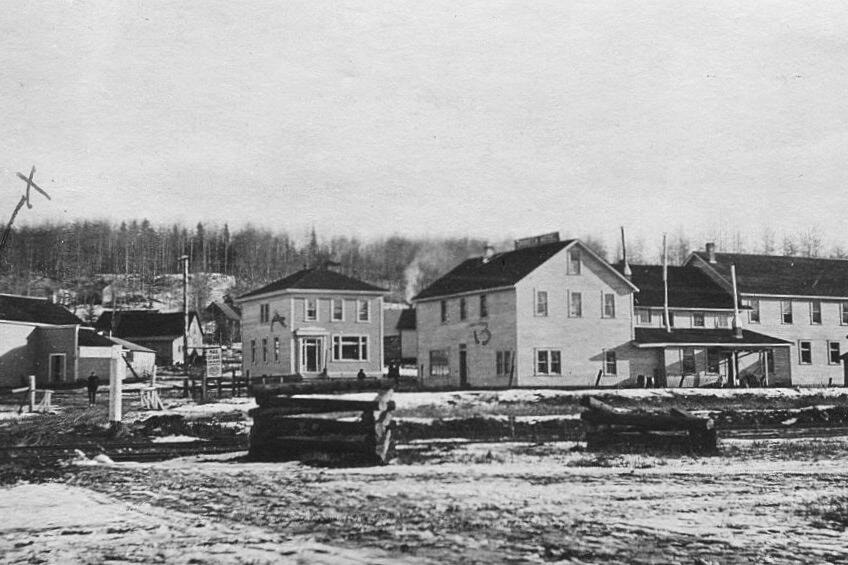Burns Lake is becoming a centenarian this summer.
Reflecting on the history and evolution of the community over the past century, Michael Riis-Christianson, curator of Lakes District Museum Society, emphasized the significant events and milestones that have shaped its development as it prepares to celebrate its 100th birthday from Aug. 17 to 20.
According to the Lakes District Museum, long before the municipality of Burns Lake came into existence, Indigenous people had inhabited the shores of the lake since ancient times.
In 1898, American writer Hamlin Garland encountered these Indigenous communities during his journey back from the Yukon. The area saw its first Euro-Canadian settlement with the arrival of telegraph companies in the late 19th century. These operators became the initial residents of what would later become Burns Lake.
The turning point came with the construction of the Grand Trunk Pacific Railway in the early 20th century. Workers flocked to the area to build the rail line, and a construction camp was established at the east end of the lake. Barney Mulvany, who won the camp in a poker game, decided to establish a town. Soon, a small community began to emerge along the railway line.
By the mid-1920s, Burns Lake had a bustling business district and housed several hundred residents. The economy relied on abundant natural resources, including trapping, farming, fishing, and logging. The forest industry, especially the production of railway ties for the Grand Trunk Pacific Railway, played a significant role. Over time, the economy diversified, and sectors such as government, healthcare, social services, education, and tourism became vital.
The incorporation of the municipality in 1923 and the resettlement of Mennonite families in the 1940s were pivotal moments in Burns Lake’s development. Additionally, the forest industry continued to drive economic growth, and the Kenney Dam project and the creation of the Nechako Reservoir further contributed to the area’s prosperity.
However, Burns Lake also faced challenges. The forced relocation of the Lake Babine Nation from their traditional territory had a significant impact on the community’s social and cultural fabric. Nevertheless, efforts towards reconciliation and Indigenous-led economic initiatives have helped strengthen the local economy.
“For much of the twentieth century, Burns Lake’s population consisted primarily of Euro-Canadians (mostly British subjects) and Indigenous people. Today, though, people from dozens of other cultures live, work, and play in what Mulvany called, ‘this old tent town of mine.’ The community is richer because of it,” Riis-Christianson said.
The community’s connection to the land remains strong, even though the Kenney Dam project caused hardships for displaced families.
Burns Lake’s most prominent landmark is its crooked Main Street. The route, featuring two dogleg turns, has challenged motorists for decades. Transport trucks often struggle to navigate it, sometimes requiring the removal of highway signs on the traffic islands to accommodate exceptionally long loads.
According to the Burns Lake Visitor Centre, other standout features include its sole traffic light, symbolizing the town’s small size and close-knit community. The town is also known for its unpredictable weather, with all four seasons sometimes occurring within a single hour, particularly during the May long weekend.
Burns Lake is a town where the sense of familiarity runs deep, as everyone seems to have connections to someone in the community. Young individuals born and raised in Burns Lake may be eager to explore beyond their hometown, but there is an undeniable allure that draws them back, highlighting the comforting and nostalgic atmosphere that permeates the town.
As preserving the historical charm of Burns Lake remains a priority, the Lakes District Museum Society has played a vital role.
“For me, though, the real ‘gold’ in the museum can be found in its archives, which contain more than 30,000 documents, photographs, and newspapers. My favourite photos are those taken by a telegraph operator named William Gow between 1911 and 1920… Those photos provide a rare glimpse into history,” Riis-Christianson said.
As the year-long celebration unfolds, Bryanne White, the centennial project manager, introduces the main celebration event, which will place at Radley Beach and Spirit Square. Activities will range from triathlons and live entertainment to kids’ activities, sports tournaments, food, shopping, parades, and more.
A highlight of the event is the opening of the Anglican church, the oldest building in Burns Lake, for a Strawberry Tea. The event serves as a platform for locals and visitors to come together, enjoy the festivities, and create lasting memories.
The restoration of the heritage church is currently underway as well, with completion planned for the Centennial celebration, according to Dolores Funk, the economic development officer at the Village of Burns Lake.
“Although I wasn’t born in Burns Lake, I am proud to call it home. It has its warts — every community does — but its residents are some of the most friendly and generous in British Columbia,” Riis-Christianson said.
